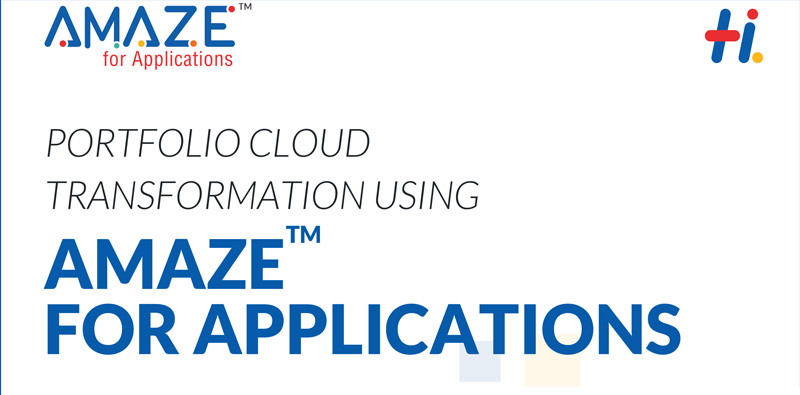
The dynamics between legacy banks and the fintech sector is all too often framed through a prism of conflict. From retail and investment banking to consumer lending and wealth management, the popular perception is that the new and growing generation of digital opportunists poses a threat to a traditional sector facing challenges to match its level of flexibility, innovation, and dynamism.
The pandemic has further sharpened this image, with banking customers adopting digital platforms at an unprecedented rate and the demand for digital services continuing to grow. ‘The Fintech Effect’, a report from Plaid and The Harris Poll published in October 2021, found the UK and US both witnessed a more than 50% increase in fintech uptake over the previous year, with the average number of apps and services used by banking customers rising from 2.8 to 3.5.

Banks are under unprecedented pressure to keep up with the evolving customer expectations and are finding it challenging to maintain a balance between driving innovation and controlling costs. While the banking sector has been hit hard by the events of the last two years, it has also been forced to better appreciate the gaps in the provision of services. A KPMG report, Digitalisation in Banking Beyond Covid-19, found the sector as whole “more inclined to accelerate the digital transformation path through partnerships and collaborations”.
Therefore, while newer platforms will continue to emerge and challenge incumbents, we may well be entering an age of mass collaboration as the old-age banks will look forward to working with digital platforms in order to develop products and services that they are incapable of developing in-house due to constraints in bandwidth, expertise, or budget. Such partnerships could define the future of financial services.
The rise of open banking poses a significant challenge and huge opportunities in crafting such a future. Open banking, in simple terms, means the process of using APIs to open-up consumers’ financial data to third parties. Incumbents must increasingly invest in compliance around open banking requirements, and they also need to ensure that they are not passive participants in this space with respect to engaging in the opportunities it offers, as well as the requirements it demands.
Providing third-party financial service companies access to consumer banking, transaction, and other data sources reflects a cross-industry trend of building open APIs so that third-party service providers can access data. Connecting payments and account information services to third parties promises to enable banks to expand their product offerings and distribution channels through active partnerships with fintech organisations, thereby enhancing customer experience by expanding the range and quality of self-service with digital access to financial products and services.
Untangling legacy systems
McKinsey expects banks to triple the number of public APIs they have in use by 2025. However, many incumbents are faced with the complex and costly task of untangling legacy infrastructure in order to streamline core processes before they can even think of building those connections and participating fully in the open banking landscape.
For open banking to work, each API must be designed to sync with one’s core architecture and applications. This presents various challenges given the complexity of existing backend systems. The need to connect to their complex back-office environment before they are able to work on implementing open APIs is not a challenge faced by fintechs built in the cloud. This means incumbents are trying to catch up yet again as they seek to unlock new levels of innovation through open banking.
The guidelines to leverage open banking in an efficient way are in place through Banking Industry Architecture Network (BIAN) standards. BIAN is an independent, member-owned association that helps banks improve their technical architecture, and provides a framework for delivering highly secure, reusable, and standardised processes.
BIAN taxonomy lays out clear and standard definitions for banking business functions so that they mean exactly the same thing to all fintech firms. Compliance to BIAN standards helps drive API enablement of core banking models, with a single-point-entry for all channels and common service for all consumer locations, thereby providing the flexibility to orchestrate between core banking applications.
For banking players in the early stages of untangling their legacy banking processes to enable open-API standards in compliance with the BIAN framework, Hexaware Technologies, which counts among its client base some of the world’s largest financial institutions, has developed an open banking solution that enables banks to componentise their business operations progressively.
Automate, cloudify, and transform
Hexaware’s three-pronged strategy is simple and direct – “Automate Everything, Cloudify Everything, and Transform Customer Experiences” – and it is also a fair reflection of the business priorities for old-age banks looking to actively participate in the open banking landscape.
Hexaware’s amaze platform, an automation-led cloud replatforming product suite, can expedite cloud transition journey considerably. The process begins by mapping all business capabilities to the related applications (such as custom, COTS, data, and reporting) and unearthing the dependencies of each BIAN service domain in the IT portfolio for end-to-end processes spanning the entire IT landscape. It also defines the service boundary of each BIAN service domain.
Amaze then generates cloud modernisation recommendations across its six Rs’ – Retire, Retain, Rehost, Replatform, Refactor, and Rearchitect– based on each service domain, as well as recommends the most appropriate wave grouping based on service boundary. Having defined the approach, amaze® then accelerates the API enablement of each custom monolithic application in each service domain’s service boundary to create an API catalogue based service landscape.
A central gateway for single-point-entry of each business capability is then created orchestrating the newly created backend API to the existing service or new business capability. A central gateway also enables orchestration with cloud marketplace third-party APIs in order to enhance existing business capabilities or creating new ones.
Amaze’s open banking solution can run in any public or private cloud and is already in use by Hexaware’s several major banking and financial services customers. Furthermore, amaze is a SaaS platform and can analyse an application thoroughly for cloud readiness in just 1 day. All we need to do is install a SaaS app and give it access to the application that is being considered for cloud modernization. Irrespective of the number of applications a client is willing to cloud modernize, amaze® enables us to tell within 1-2 days how quickly we can take these to the cloud, thanks to its automated assessment capabilities. This is done by adhering to all the regulations and security standards.
Accelerating this path to unlocking greater levels of collaboration and innovation is invaluable to banks under unprecedented pressure to deliver new services and develop better digital consumer channels. Threats to traditional banking models are greater than ever, but so too are the opportunities. Banks must find a way for actively participating in a shared ecosystem, leveraging existing strengths, while at the same time transforming the processes and platforms that prevent them from participating fully in an environment driven by data, innovation, and speed.








